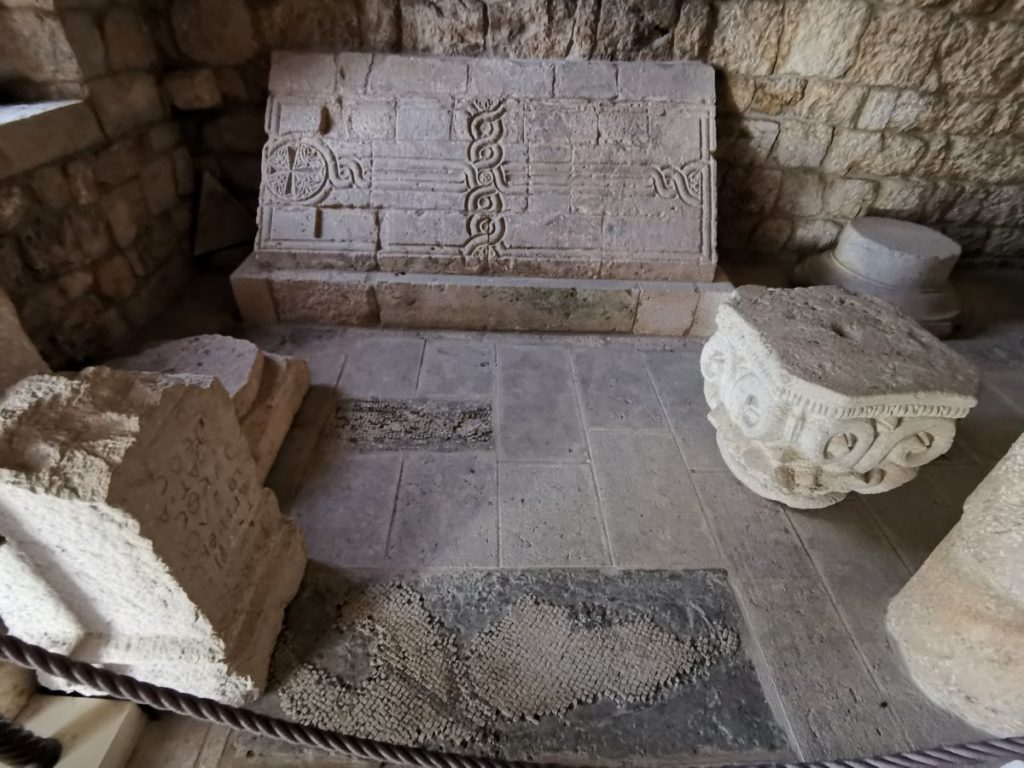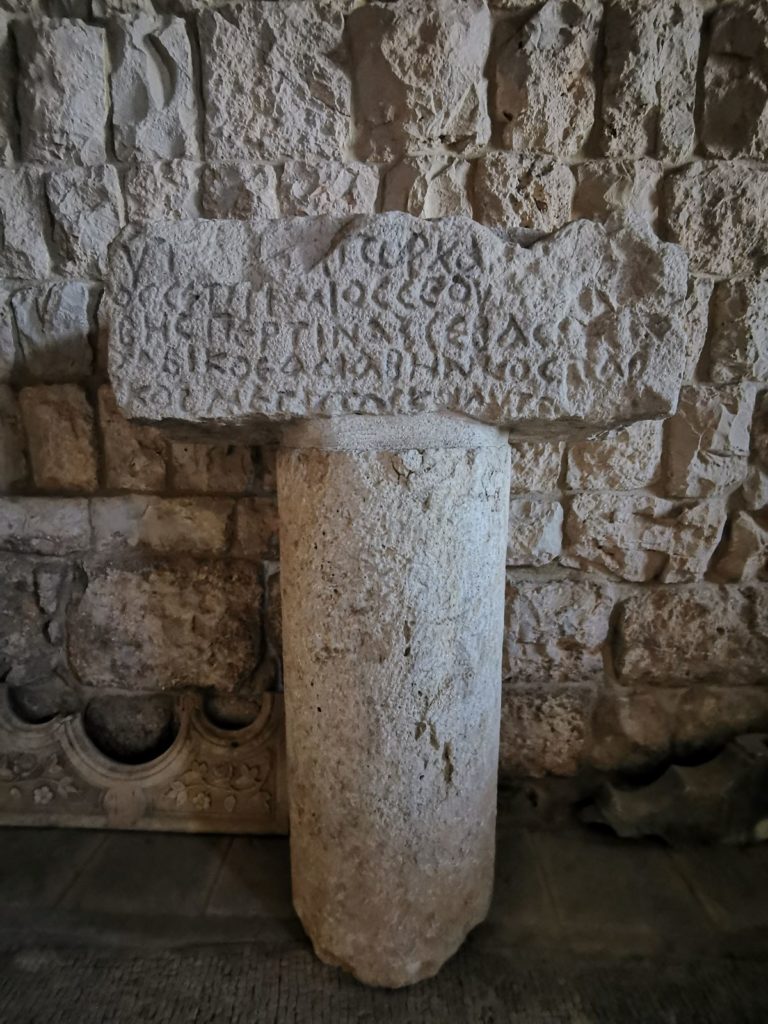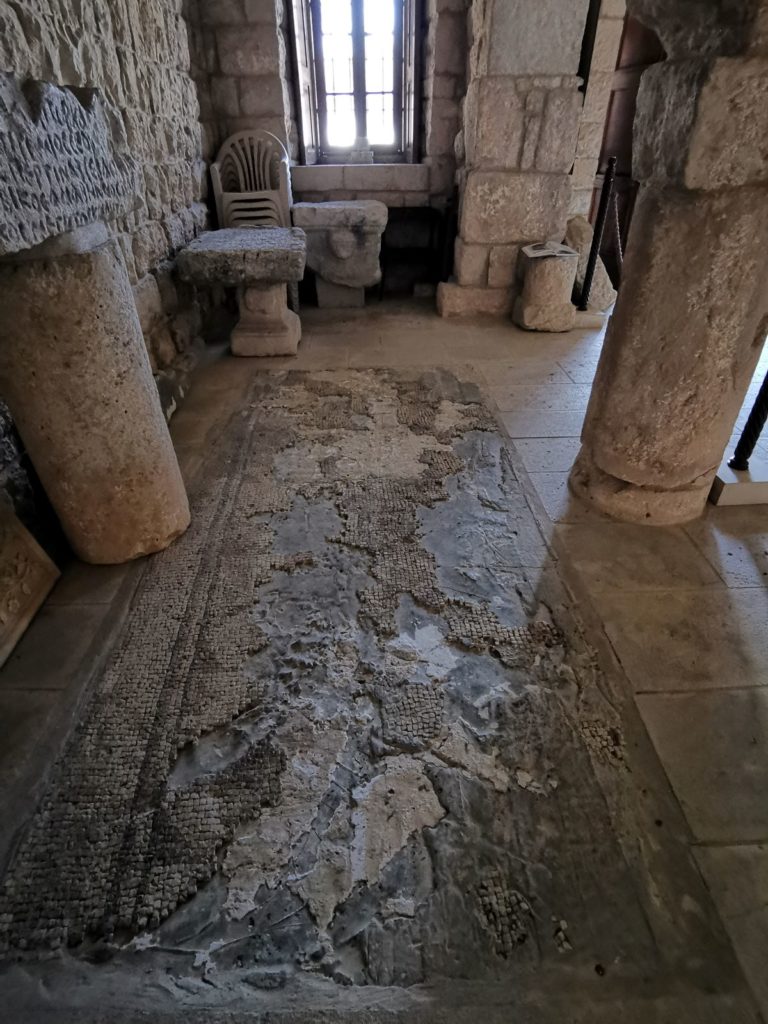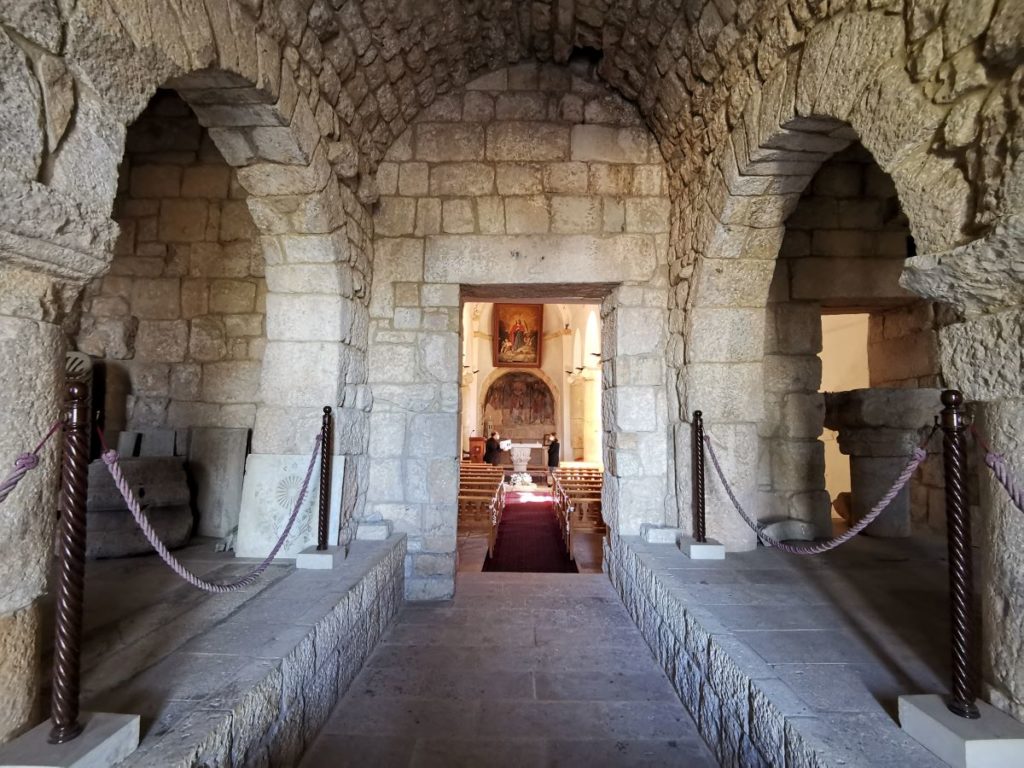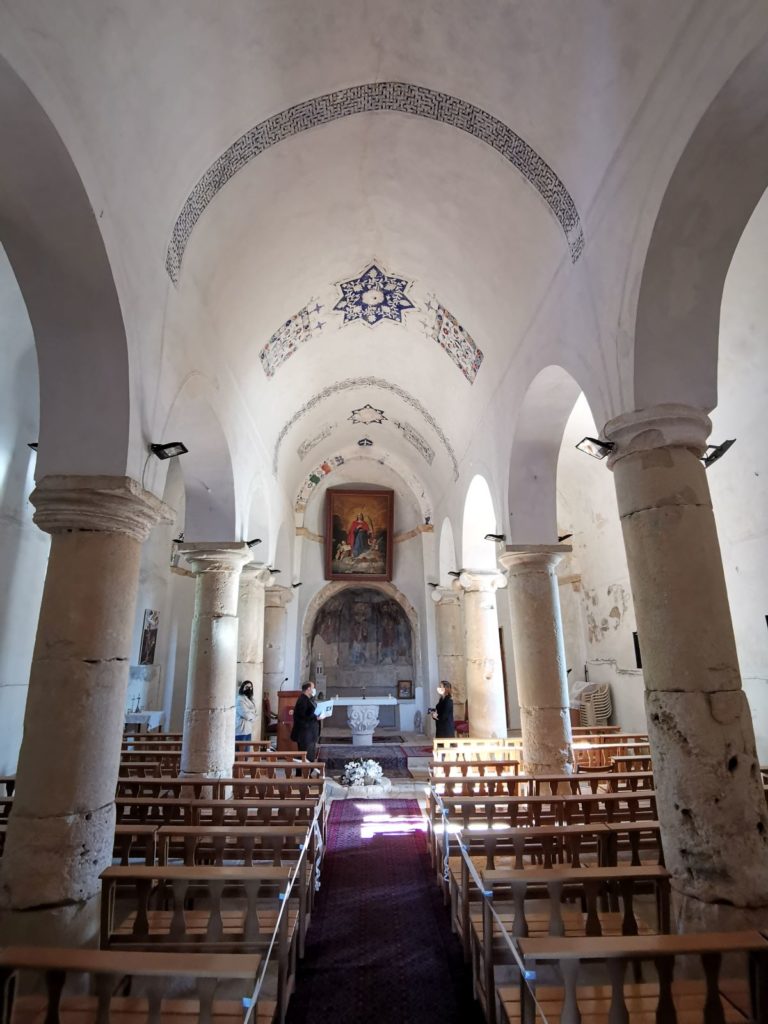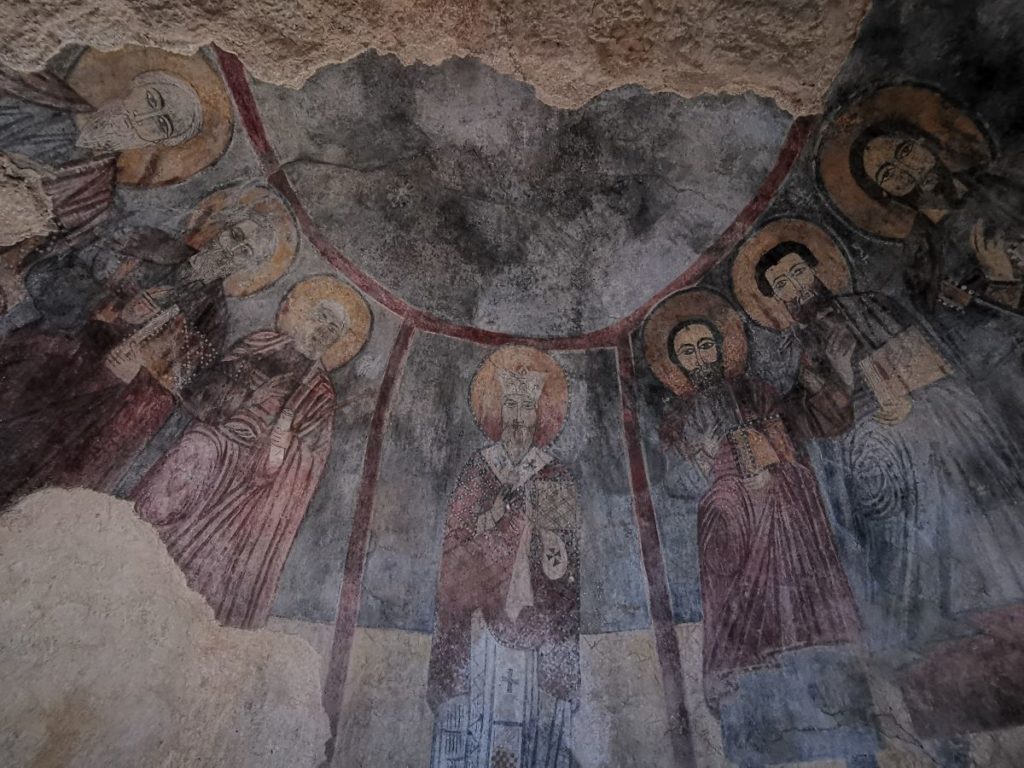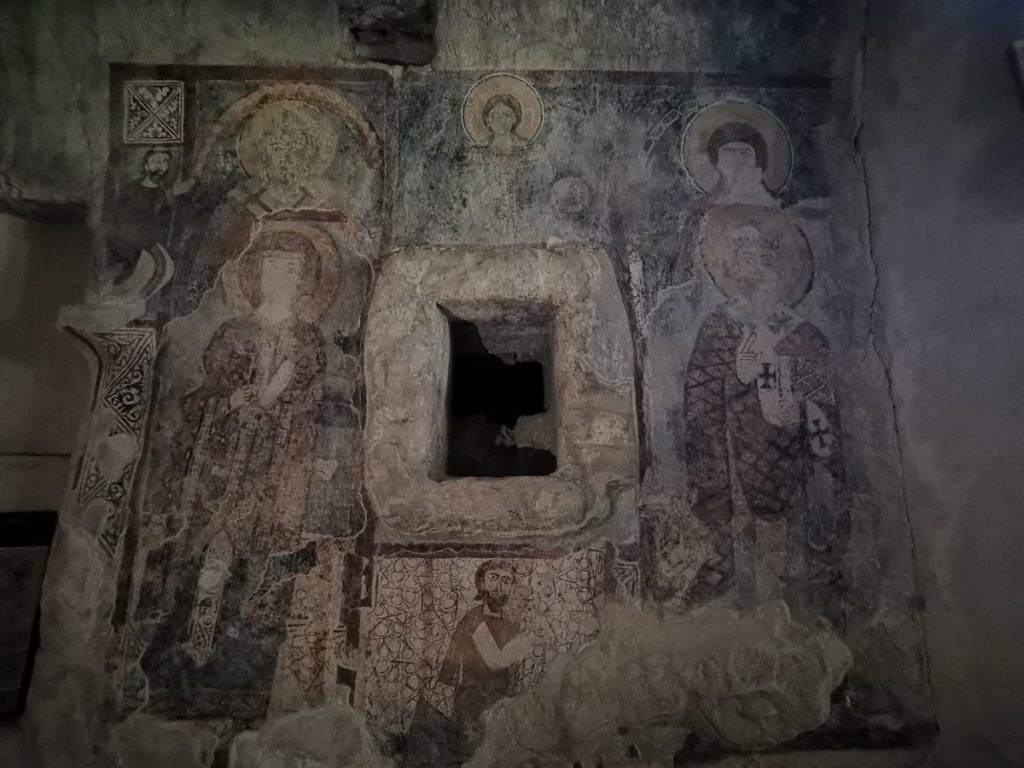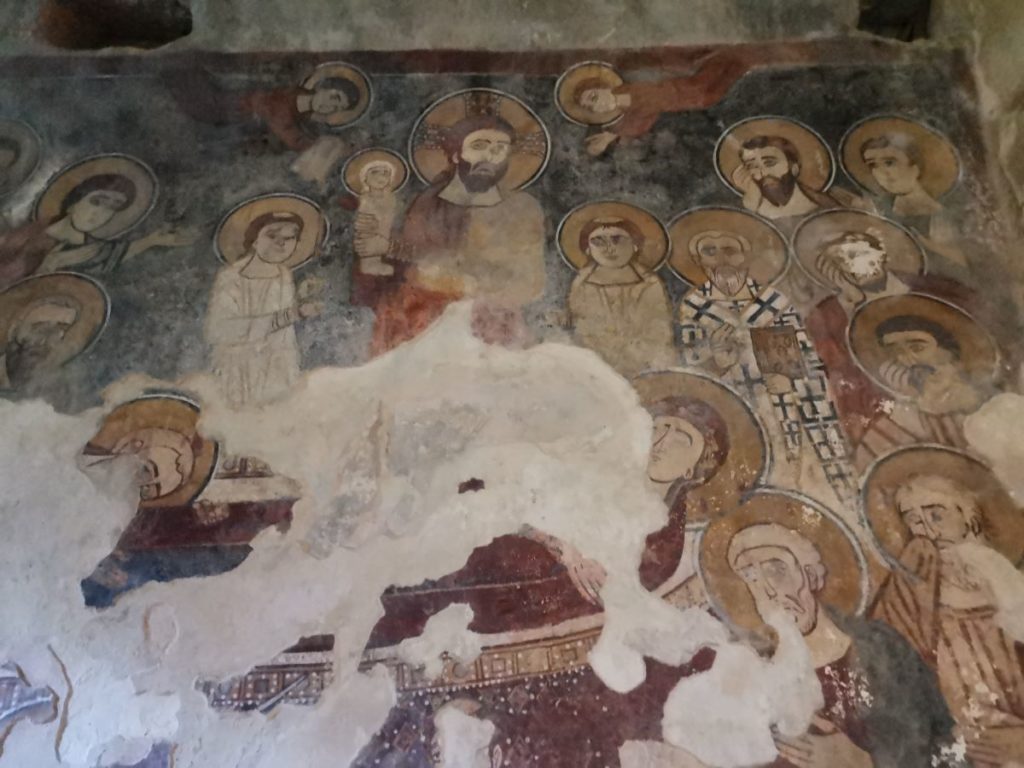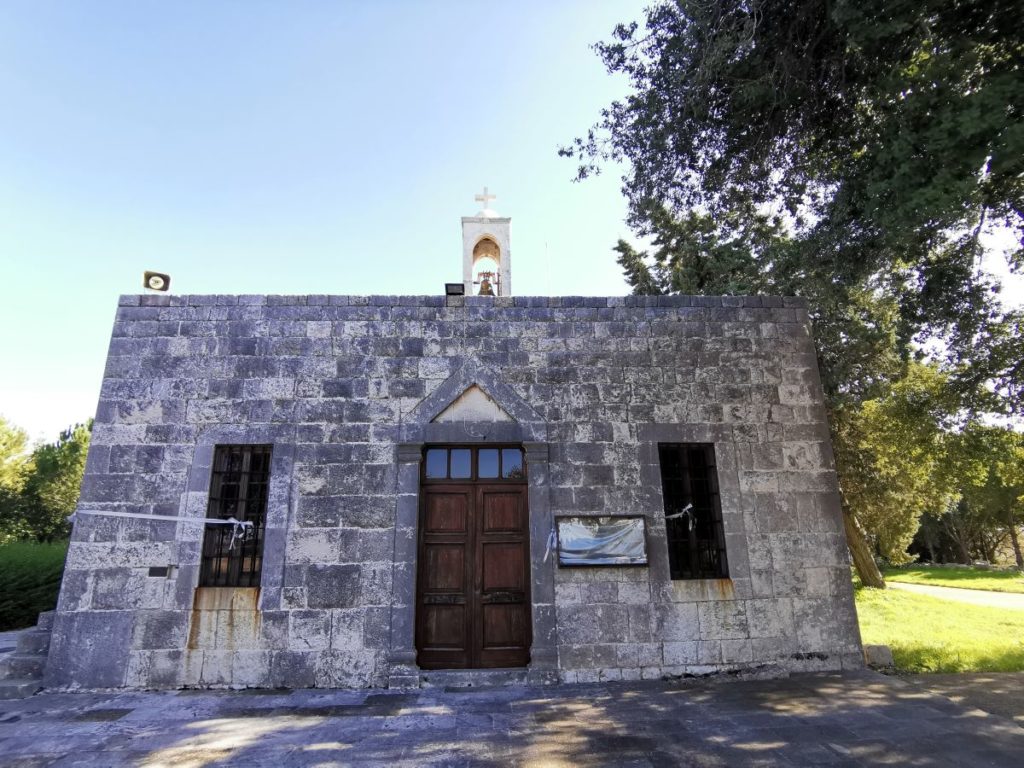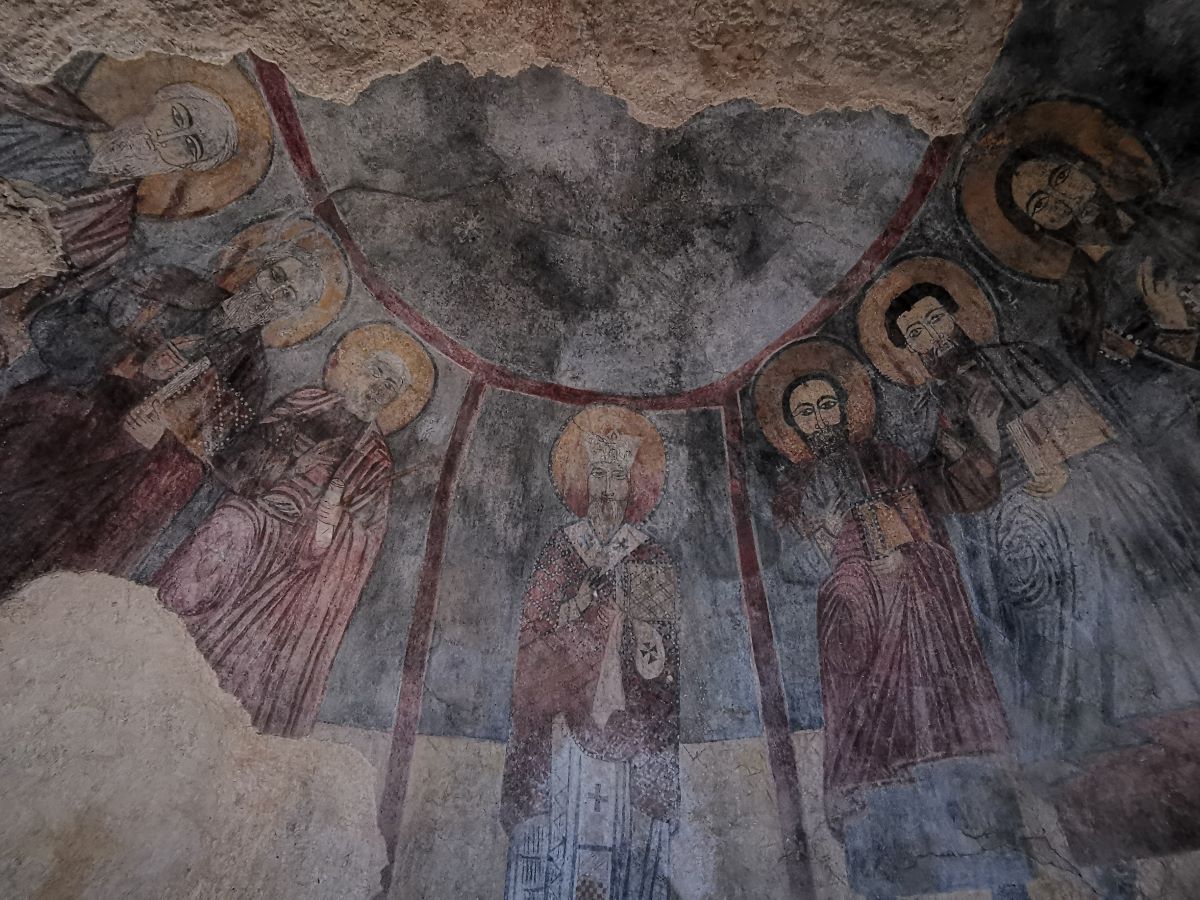Maad village houses a church built on the site of a late Hellenistic-early Roman era temple.
Timeline
1st century BC – Construction of a temple during the late Hellenistic era.
1st – 2nd century AD – Remodeling of the sanctuary during the Roman era.
4th – 5th century AD – The temple is converted into a Byzantine church.
12th – 13th century AD – The Byzantine church is remodeled during the crusader period.
1940s – 1960s – The church is studied by the General Directorate of Antiquities through surveys and extensive excavations.
Dedication
Pagan Temple – Following the excavations performed on site, researches found three votive texts that mention a great cosmic god, as well as the god Satrapes and the god Ourounes (or Ouronos) of Osmoda. These texts are stored at the entrance of the church.
Church – it is dedicated to St. Charbel of Edessa, who lived in the city in the 2nd Century AD. St. Charbel was a pagan who converted to Christianity and was consequently persecuted along with his sister under Trajan rule.
Structure
Maad’s church is of a rectangular shape, holding several architectural layers and reused block of stones from the former pagan temple. Its interior space is composed of a narthex, a aisel area, three apses and annex rooms.
The narthex: meaning the main entrance, is composed of three compartments separated by two rows of two arches each, resting each on a column reused from the pagan temple. The north compartment holds the tomb of a lady from the time of the Crusaders, named Anne Boulanger, which dates from 1243. In addition, several ancient and medieval blocks (capitals, bases, mosaics, etc.) are preserved in the north and south side compartments of the narthex.
The aisle area: this area constitutes the main space of the church, and has a pre-rectangular proportions. It is 0.90 m lower than the narthex, accessible from the latter’s central compartment, or through an open side door in its north wall.
The space is divided into three aisles separated by two rows of four columns reused from the pagan temple.
The central apse: it holds a 13th century AD medieval frescoe that depicts St. Peter and St. Paul, surrounded by four evangelists, with a bishop at the center of the painting.
Sacristiya: the south-east room behind the apse, locally known as Sacristiya, holds two awe-inspiring 13th century AD medieval frescoes contemporary with those of the central apse. On the northern wall of the room, a small opening can be seen – It is believed that this opening is the place where the relics of St. Charbel were preserved.
The frescoes depicts the Dormition along with the figures of Christ, the Virgin Mary, saints and donors.
The expression on the faces is severe and the figures are performed in a simplistic and schematic way. This painting is similar to the style of the Saint-Theodore church frescoes and possibly belongs to the Syrian pictorial tradition.
Karim Sokhn
Tour Operator & Tour Guide
References:
La vie religieuse au Liban sous l’Empire Romain, Julien Aliquot
La fonction de l’annexe sud de l’église de Maad, Nada Helou, 1999-2000
The temple hidden under the church of Saint-Charbel de Maad, Hany Kahwagi-Janho
